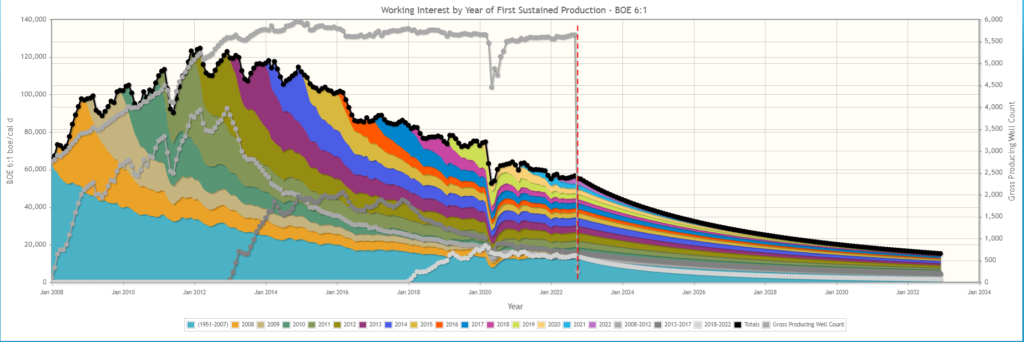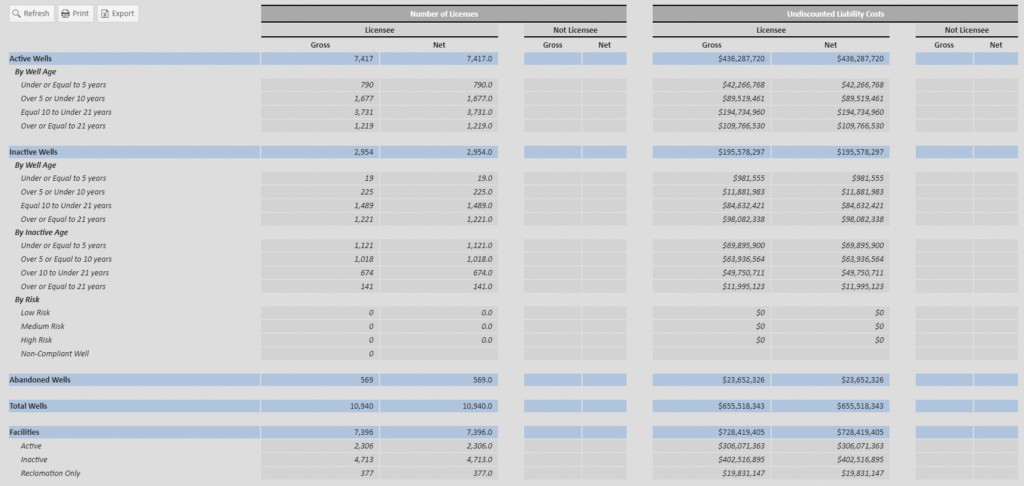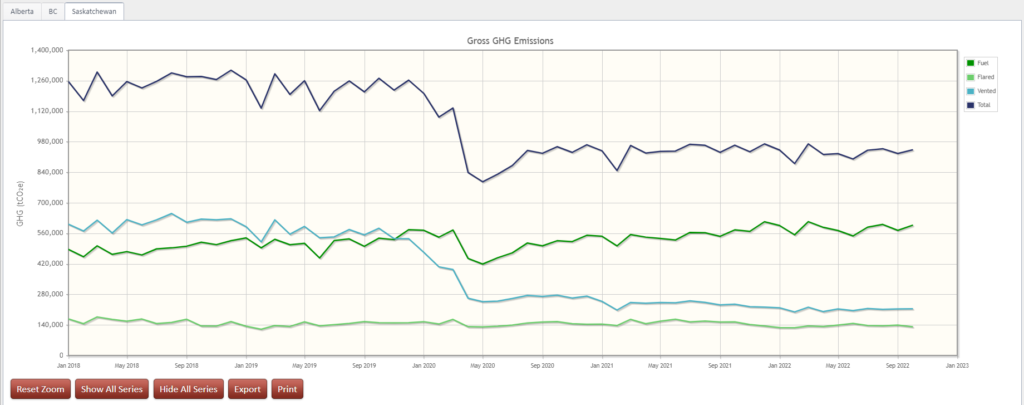Word to the Wise: Bakken Overview
January 31, 2023
Each week, XI Technologies scans its unique combination of enhanced industry data to provide trends and insights that have value for professionals doing business in the WCSB. If you’d like the Word to the Wise delivered directly to your inbox, subscribe here.
The Bakken formation is a thermally mature unconventional tight oil play discovered in 1951 with some of those wells still producing to this day. The play covers underlying parts of Saskatchewan, Manitoba, Montana, and North Dakota. This week we’ll take a deeper dive into the Saskatchewan and Manitoba portions of the play.
Ownership in Bakken Assets
The top 10 companies own 97% of the assets in this zone, but there are a total of 55 companies with currently producing assets. Out of those, there are 7 companies that have been active within the last year. The map below shows the top 10 Bakken players (based on current boe/d) in this area.
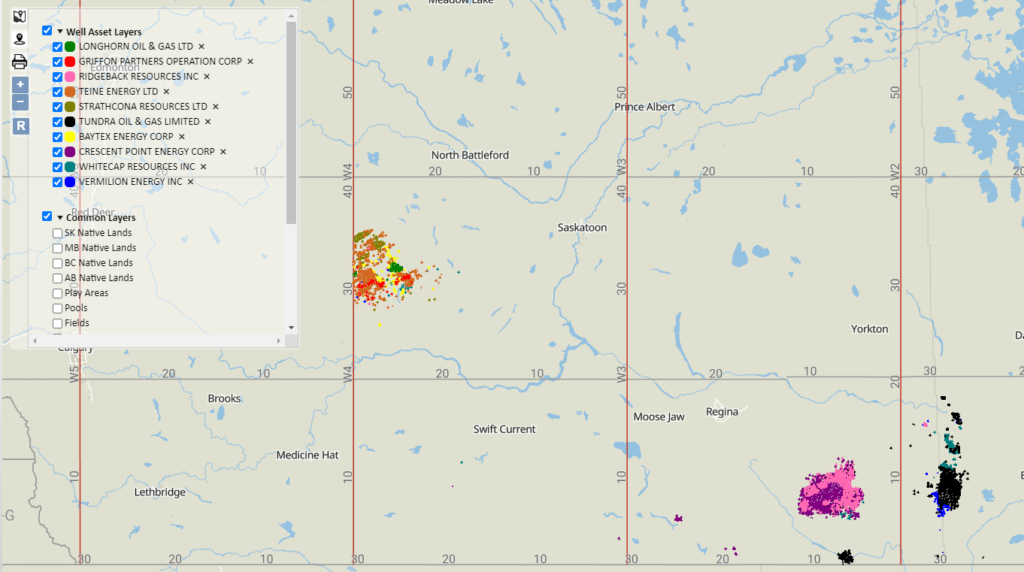
Click here to download a report of all companies in the Bakken zone.
Production history of Bakken assets
Let’s investigate the Bakken assets a little further. Looking at the vintage of this production, while there is a good chunk of production coming from pre-2007 wells, the gross well count was ramping up consistently until 2014, when it steadied out. Unsurprisingly, you can see a rapid drop in early 2020, but the well count and production are slowly coming back up again, as can be seen by the graph below.
Expiring Land
If you revisit the ownership top 10 map, you can see that there are three main areas that produce in the Bakken. Looking forward, are there any leases in these areas, expiring in the next 2 years to indicate an area that may increase in drilling?
Excluding leases with producing wells, there are around 900 crown leases expiring with around 165,000 undeveloped hectares of land. Here’s a look at the expiring hectares by the top 25 companies in the next two years.
Company operations
Looking at the top ten companies that are increasing production in the area, we can look at their marginal well ratios over time to potentially give insight into operational efficiency. This data is obtained from our LCA Report and a snapshot can be seen below.
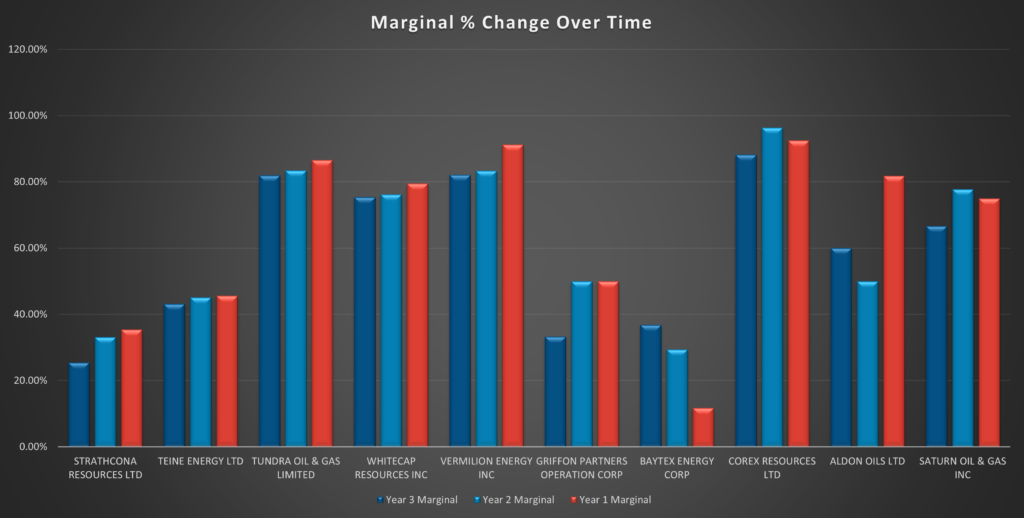
Click here to download an LCA report on the companies with assets in the Bakken.
Liabilities in Bakken
Because these assets are unconventional, the ARO obligations become extremely important. If companies are hoping to acquire rich and long-lived Bakken assets, it is essential to look at liabilities among various acquisition opportunities to determine differences in future obligations.
While there are a lot more active wells in this area, there are still 2954 inactive wells in this area. There is over $195 million of liability on these inactive wells.
Note: Liability costs displayed in the report below are based on XI’s ARO cost model.
Click here to download an ARO report on Bakken assets
Emissions in Bakken
A quick snapshot of the Scope 1 GHG Emissions from the AssetBook Emissions Report for Saskatchewan and Manitoba facilities in these areas shows that in the last 12 months, they have produced approximately 9.5 million tonnes CO2e. About 1/3 of the emissions come from the 20 largest gas plants or gathering systems in the area, operated by larger midstream or E&P companies.
This area has an established gas production infrastructure and an average gas conservation rate of 71% where 29% of gas produced ends up as emissions. Most emissions are from fuel, with venting about half, and flare half of that.
Next week, we’ll look at this area from a drilling perspective to gain more insight.
If you’d like to learn more about how XI’s AssetSuite software can analyze companies, packages, or regions throughout Western Canada, visit our website or contact XI Technologies.
